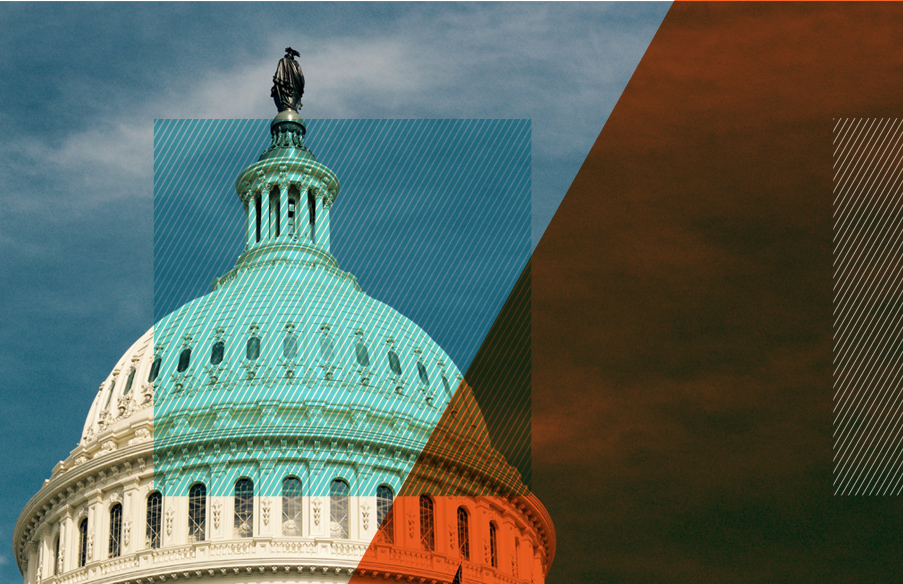How New Tax Law May Deepen America’s Political and Geographic Divides
This federal tax season marks the last one with a full dose of SALT – state and local taxes. Next year the new Republican tax plan will place a $10,000 cap on the deduction households can take on their property and state and local incomes taxes, and those changes will fall hardest on the most urban places.
Data from the Tax Foundation analyzed by the American Communities Project finds it is the Big City and Urban Suburb communities that pay the most in SALT taxes, followed by the Exurbs. All those types have an average median SALT amount of more than $3,000, meaning many people in those communities are most likely to feel the impacts of the new law, according to 2014 data from the foundation.
Sitting on the other end of the spectrum in the ACP: the Native American Lands, Aging Farmlands and Hispanic Centers. All have an average median SALT amount of less than $1,000.
| ACP Type | Average Median SALT |
| Urban Suburbs | $4,931.47 |
| Big Cities | $4,042.68 |
| Exurbs | $3,048.10 |
| Middle Suburbs | $2,411.01 |
| College Towns | $2,403.72 |
| LDS Enclaves | $1,724.85 |
| Rural Middle America | $1,618.95 |
| Military Posts | $1,567.61 |
| Graying America | $1,452.73 |
| African American South | $1,089.79 |
| Working Class Country | $1,069.95 |
| Evangelical Hubs | $1,005.99 |
| Hispanic Centers | $891.69 |
| Aging Farmlands | $765.36 |
| Native American Lands | $424.39 |
Much has been made of the political impacts of these numbers, how Democratic leaning communities look as though they will be hit hardest in this part of the new law. And the numbers bear that out.
In the 2014 data, there were 13 counties where the median SALT amount was over $10,000 and 11 of those counties voted for Hillary Clinton in 2016. That means that more than half the households in those communities will take a hit under the new tax law. (Nine of those counties are Urban Suburbs in the ACP, three are Big Cities and one is an Exurb.)
But that broad view of the data may miss a larger point. Because of the way it targets state and local taxes, the new tax law is more than a purely partisan measure. In many ways it may deepen the urban/rural divide that has become a defining part of the American political story, making urban areas lean more Democratic.
Places with higher SALT amounts tend to be more urban because urban property values are typically higher which means urban property taxes tend to be higher, regardless of a homeowner’s political affiliation.
All those counties, even the ones that voted for Clinton in 2016, have some Republican voters in them. Many of them will pay more under the new rules as well, which may make them less likely to vote Republican in future elections regardless of political affiliation. It certainly makes them less likely to support this plan and the Republican Congress members who passed it.
And while it’s true that the SALT deductions tend to be biggest in the coastal states – such as California, New York and New Jersey – at the county level the impacts creep inward to swing states.
The 50 counties with the highest median SALT amounts include six counties in Pennsylvania, Wisconsin and Minnesota, three of which voted for President Donald Trump in 2016.
| State | County | SALT Amount | ACP Type | 2016 winner |
| MN | Carver | $7,643.82 | Exurb | Trump |
| WI | Ozaukee | $7,564.69 | Exurb | Trump |
| PA | Chester | $6,666.00 | Exurb | Clinton |
| PA | Montgomery | $6,399.52 | Urban Suburb | Clinton |
| MN | Hennepin | $6,302.26 | Big City | Clinton |
| WI | Waukesha | $6,196.59 | Exurb | Trump |
That’s not a lot of places, but if the 2020 presidential election is as close as the 2016 race was, those numbers could matter, possibly quite a bit. And in some of these areas, all around major urban centers, there may be angry, disheartened Republicans who either stay home or voice their objection at the ballot box in November.
To be clear, the SALT issue is not over. Three states have filed suit against the federal government arguing that the new law “preempts the states’ ability to govern by reducing the ability to provide for their own citizens” and unfairly targets some states because of their higher state tax rates.
But in its current form the SALT provisions of the new tax law only seem likely to harden the community voting patterns the ACP has been noting for some time.
The Big Cities and Urban Suburbs, which have long been solidly Democratic, will have more reason to lean that way. And the Republican-heavy Exurbs, which have been somewhat skeptical of the Trump-led GOP, will have more reason to doubt the party.
